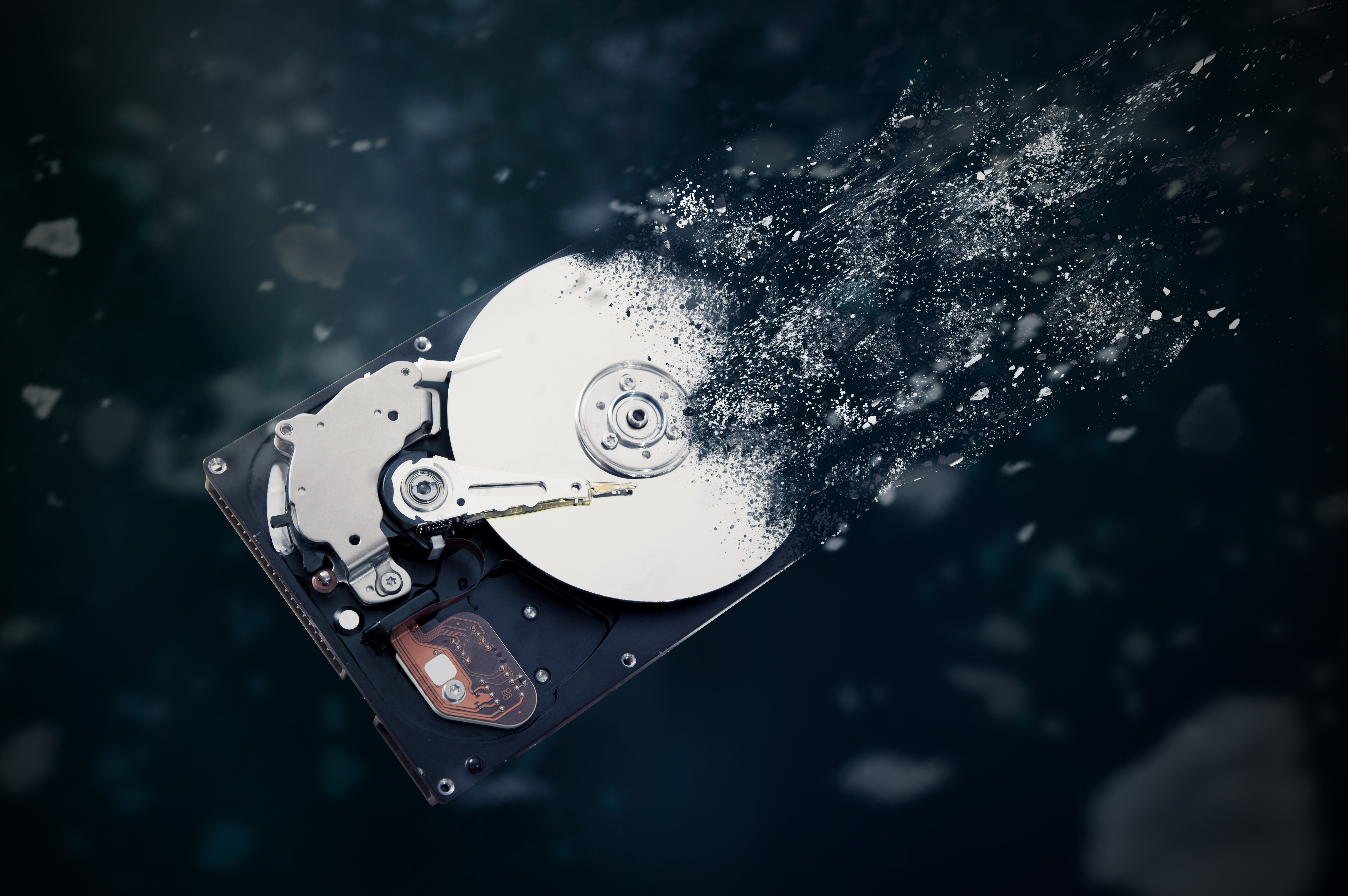FINANCIAL ADVICE | fraud protection
How to Safely Dispose of Your Computer and Hard Drives
Published February 11, 2019

Key Takeaways
- Just deleting your files is not enough.
- If you really want to be sure no one can ever access your information, you must physically destroy the components inside the computer.
- Most cities have multiple places to recycle your old electronics.
These days it seems technology barely lasts a year before it needs to be replaced or upgraded. If you’re getting a new computer, you’re probably wondering, "What do I do with my old one?" You not only want to be environmentally conscious, but you want to make sure any of your data on that computer doesn’t fall into the wrong hands. To protect yourself from identity theft, here’s how to safely dispose of your old computer and hard drives.
Save your old files
Before you actually throw anything away, you want to make sure you hold on to the important files stored on your old computer. There are many ways to back up your files, and they’re all equally viable as long as you take the right security precautions. You can save your files onto a flash drive or external hard drive, back them up to the cloud using a free or paid storage service or transfer them directly to your new computer. Just make sure any cloud service is secure, and you have the proper security protections installed on your new computer before you transfer any files.
Delete your personal information
After you’ve saved your important files, it’s time to start erasing all the potentially sensitive information on your computer. As you begin this process, remember this: Just deleting your files is not enough. Although they may look like they’re gone for good, any determined hacker would be able to recover the files without too much difficulty. To protect yourself from identity theft, permanently erase your personal information.
If you’re donating or recycling your computer, you never truly know where it’s going to end up. That’s why before you wipe your hard drive, there are some steps you should take first. It may seem like overkill, but it’s better to be safe than sorry.
To start, delete your files. Yes, they could be recovered if you don’t complete the process of wiping your hard drive, but it’s still a good first step.
Next, sign out of any accounts connected to your device. These will be things like Microsoft Office 365, iTunes or other programs that you’ve previously permitted to access your computer. You want to deauthorize these accounts so they can’t be used to steal your private information.
Next, you want to uninstall those programs and any others that link to online accounts or were downloaded after you got the computer. Programs can store personal information, even if you can’t see it, so it’s a good idea to get rid of these before taking the final step in the process.
After doing all this, you can finally wipe the hard drive. There are programs you can buy that will do this for you, and most are relatively cheap. However, a simpler option may be to perform a factory reset. A factory reset returns your computer to its “original” state just like when it was fresh out of the box. For details on how to perform a factory reset, you’ll have to find instructions for your specific operating system and device. Here are some resources for PC owners, and here are some resources for Mac owners.
If you really want to be sure no one can ever access your information, you must physically destroy the components inside the computer. You can do this by drilling holes in the hard drive or by literally smashing it with a hammer. It may seem crude, but it can be an effective way to protect yourself from identity theft. Just make sure you collect any bits of smashed material so they can be disposed of properly.
Getting rid of your old computer
Once you’ve saved the files you want to keep and cleared your hard drive of any personal information, it’s time to get rid of your old computer. You have a few options here, but the important thing is that you should never just throw your computer in the trash. Laptops, desktop computers, and tablets all have potentially toxic materials that can pollute our air and water if they end up in a landfill.
Instead of just throwing your computer away, here are some better options:
Recycle it
Most cities have multiple places to recycle your old electronics. It could be through your city or town, or a major retailer. Best Buy and Staples are perhaps the biggest retailers that offer free electronics recycling. Do a quick search, and you’re sure to find a location near you that accepts electronic waste. Unfortunately, some disreputable “recycling” services end up throwing things away. So if possible, make sure whichever option you choose to recycle your computer is part of the e-Stewards network, which is dedicated to recycling electronics responsibly.
Trade it in
Some companies will allow you to trade in your old computer for a discount when you buy a new device. If you’re in the market for a new computer, ask your local retailer if they accept trade-ins.
Donate it
Your computer might seem old to you, but to others, it could be a dream come true. Many nonprofit organizations collect and send donated computers to developing countries where children and adults can advance their digital skills and connect with the world. If you have a working device you no longer want, consider donating it to someone in need.
